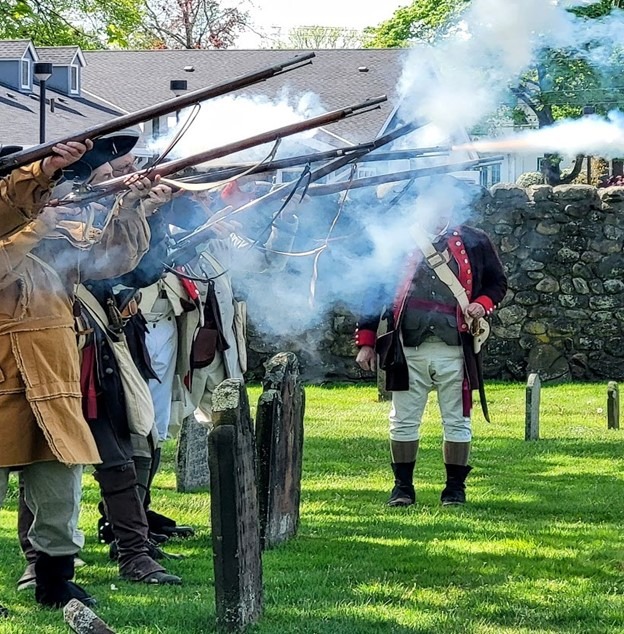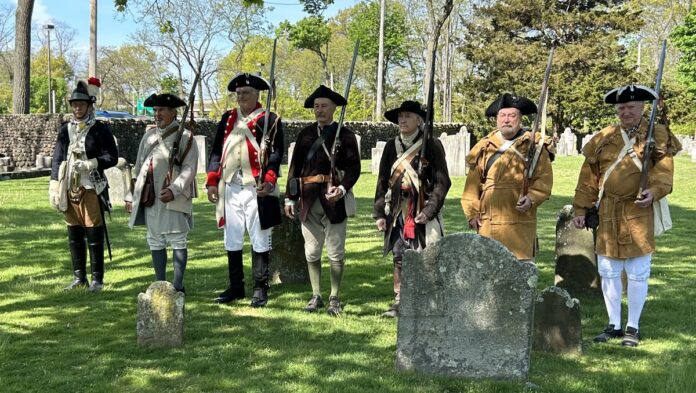A True Spy Story Revealed
Grave Marking Ceremony
Sponsored By:
Stratford Historical Society and the General David Humphreys Branch No. 1 of the Sons of the American Revolution
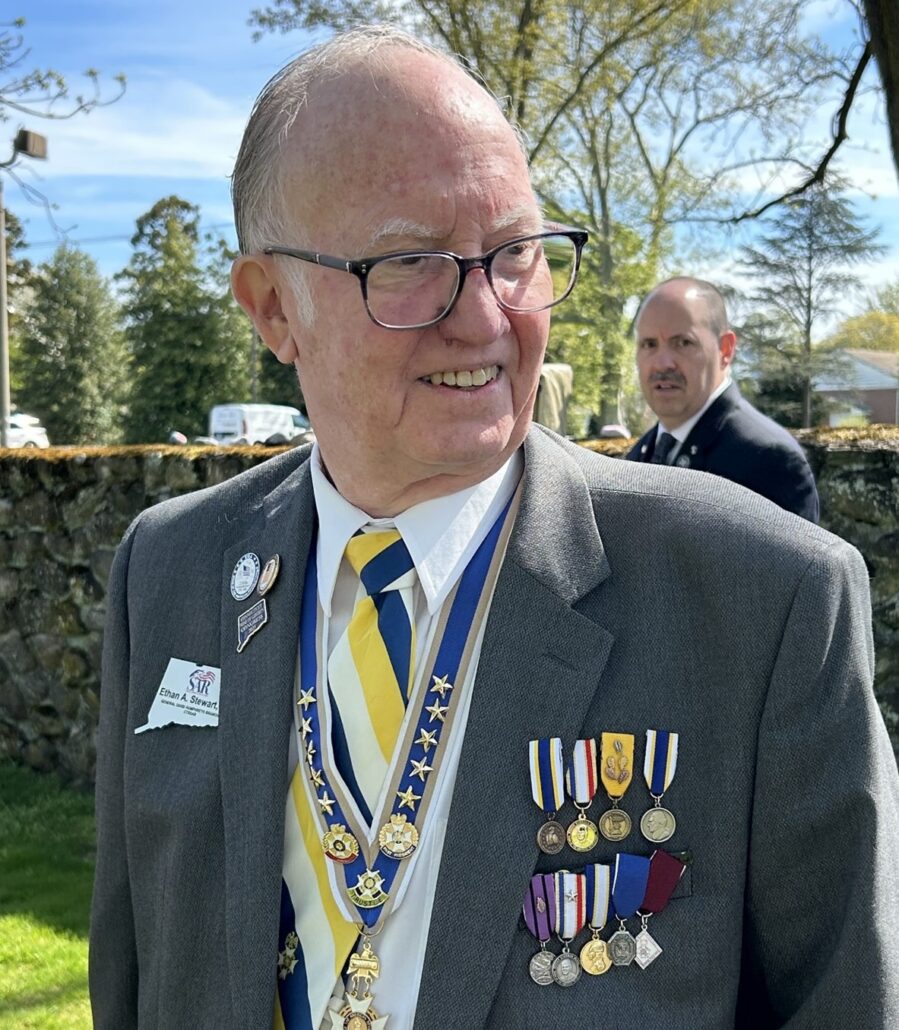
Ethan Stewart, Researcher from the Stratford Historical Society and a Son of the American Revolution
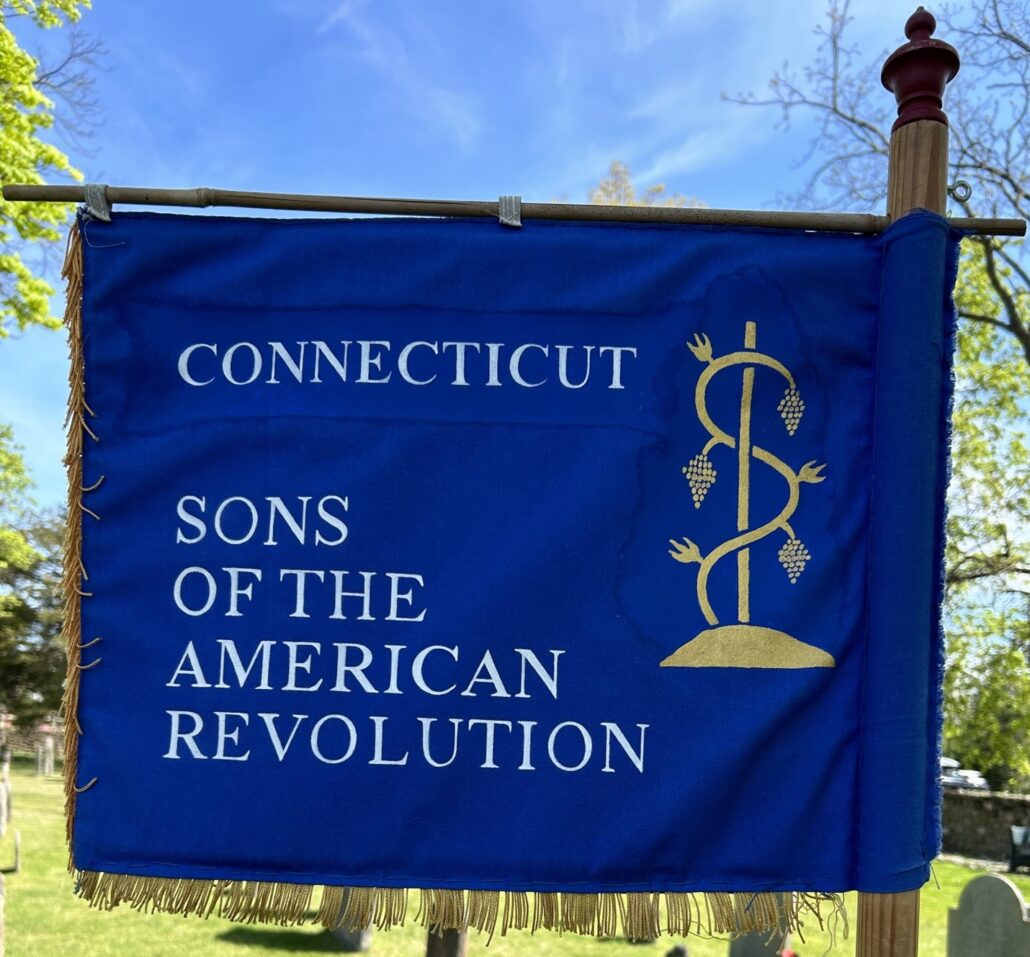
Honoring Lieutenant George Smith, Captain James Booth, Captain Samuel Ufford, Corporal John Wells and Private Jabez Curtis.
The Grave Marking Ceremony that took place on Saturday, May 4th at the Old Congregational Burying Ground was significant in that it represents one of our State Society’s first celebrations of America’s 250th Anniversary. Celebrating a decade of the American Revolution, from the first meeting of the Continental Congress in 1774 to the signing of our Declaration of Independence in 1776; from Trenton to Valley Forge, to Yorktown and the Treaty of Paris in 1783, for the next ten years the Society will be holding ceremonies to commemorate these and many more historic events of the Revolution, and to honor our patriot ancestors.
Biography of the Five Patriots That Were Honored

Lieutenant George Smith, A Stratford Spy Story
During the American Revolution, Benedict Arnold’s flight to the British side in the autumn of 1780 would prove devastating for nearly all of George Washington’s spies, particularly his Culper Spy Ring. Arnold would spend the next few weeks exposing every American spy he knew of. This created a tremendous problem for the Culper Ring, which funneled intelligence from the British Headquarters in Manhattan, across Long Island to Brookhaven and then over the Sound to the southern shores of Connecticut. With some of their allies exposed, their key man in the city, Robert Townsend or “Samuel Culper, Jr.”, refused to write any more letters. The ring needed a substitute and found one in George Smith, a native of Smithtown on Long Island, but by 1780 a resident of Stratford.
George Smith would join the Culper Spy Ring, writing under the pseudonym “S.G.” The true identity of “S.G.” would remain a secret until 1959, when Virginia Eckles Malone, a Smithtown historian, discovered Smith’s role. Smith, who was born in 1749, was a Princeton graduate and a prominent local attorney. As the war began, Smith was well known to all of the members of the Culper Spy Ring, serving with several of them in the local military and on local government committees controlled by Patriots. He was particularly good friends with Caleb Brewster, the daring whaleboat captain who carried intelligence across the Sound, and he assisted Brewster in receiving smuggled goods from Long Island and selling them to the locals in Stratford. The two served together until George Smith became a Deputy Advocate General under General Horatio Gates.
Smith’s position would also come with a secret role – he was Gates’ spy chief. Every general had their own spies, and in some cases generals knew who each other’s spies were. What likely spared Smith’s exposure as a spy was that Gates and Arnold hated one another after the Battle of Saratoga, so Gates does not appear to have shared intelligence or the name of his spies with Arnold. When Arnold exposed all other spies, George Smith would still be a name unknown to him.
In 1781, George Smith served with the Culper Spy Ring in one of its most crucial moments. At this stage of the war, Washington was struggling with a decision between two choices. One option, which the French General Rochambeau in particular was pushing for, was for Washington and his men to join Lafayette in his battle with Lord Cornwallis down in Virginia. Washington, however, was considering using this opportunity when British troops were going south to retake an under-defended Manhattan. Washington always wanted to retake Manhattan after he lost it in the period following the Battle of Long Island, and now he tasked the Culper spies with providing him intelligence on how many British troops were left in the city.
Washington would get detailed intelligence back from “S.G.” and Samuel Culper Sr. on the subject. Based on the information the Culper spies shared, Washington decided to forgo an attempt on Manhattan and decided to join Lafayette in his battle with Cornwallis. This fateful decision would eventually lead to the Siege of Yorktown, a crucial American victory which effectively ended the American Revolution, particularly all major hostilities.
Smith would continue to serve with the ring at least until 1782. After the war, he would continue to practice law and live out the rest of his life with his family in Stratford, where he was laid to rest there in the Old Congregational Burying Ground. A peaceful end, for an American hero.
Captain James Booth was born on October 1, 1734 in Stratford. His parents were James and Martha Clark. James married Abigail Ann Patterson on March 30, 1757 and they had 5 children; Betsey, Abel, Hezekiah, James and Silas. James was at the battle of Saratoga and was stationed in Stratford. He was part of the Northern Department in September-November of 1715. James marched to Fairfield in March of 1779 in the 4th Regiment. James was under the command of LT. Col. Dimon and Col. Whitings Militia. In 1778 James was a Selectmen and a Fence Viewer (in charge of inspecting and erecting fences). James died in March of 1809 in Stratford.
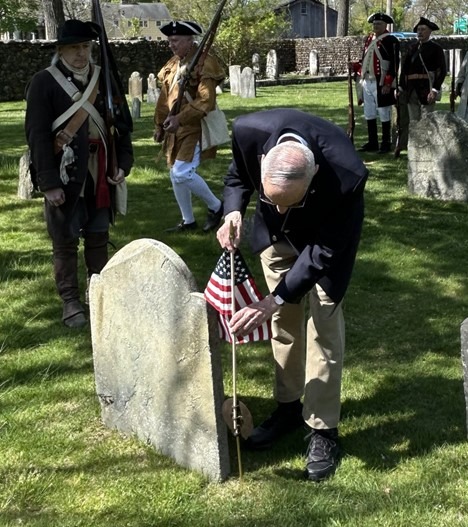
Captain Samuel Ufford was born on February 18, 1748/49 in Stratford. He was the son of Ebenezer and Jane Moss. Samuel married Abigail Gold on November 28, 1769 and they had 3 children; Mary Rugles, Hezekiah Gold and Ebenezer. Samuel also fought in the French and Indian War in the First Regiment under Major General Phineas Lyman. During the Revolution, he was under Col. Jonathan Dimon Regt 2nd Company Trainband 4th Regiment, and went to Fairfield in 1779 to repel the invasion of General Tryon. Samuel was also a Constable in 1781. He died December 12, 1822.
Corporal John Wells was born on August 26, 1747 in Stratford. His parents were John and Comfort Birdsey and he had two sisters, Charity and Betty. John never married. He served under Captain John Booth’s Company of guards of the 4th Regiment, and was also part of the Militia in 1781.
Jabez Curtis was born on October 26, 1739 in Stratford and his parents were Henry and Ann Thompson. Jabez married Betty Wells on April 25, 1765 in Stratford. They had one child named William. He also served under Captain John Booth’s Company of guards. Jabez also had civil service. He was tythingman, a local peace officer.
The Old Congregational Burying Ground lies behind Stratford Library. On February 13, 1677/8, the townsmen laid out one acre of land to be used as a burial ground. The first person buried before the layout of the cemetery was John Knell on January 16, 1651. There were 16 more before the layout. The Old Congregation Burying Place is the oldest existing burying ground in Stratford. In 1907, the gate and plaque were put in by the Mary Silliman Chapter of the Daughters of the American Revolution. There is an estimate of about 900 gravestones and another 300 burials without a stone. Over the years more land was donated to the cemetery.
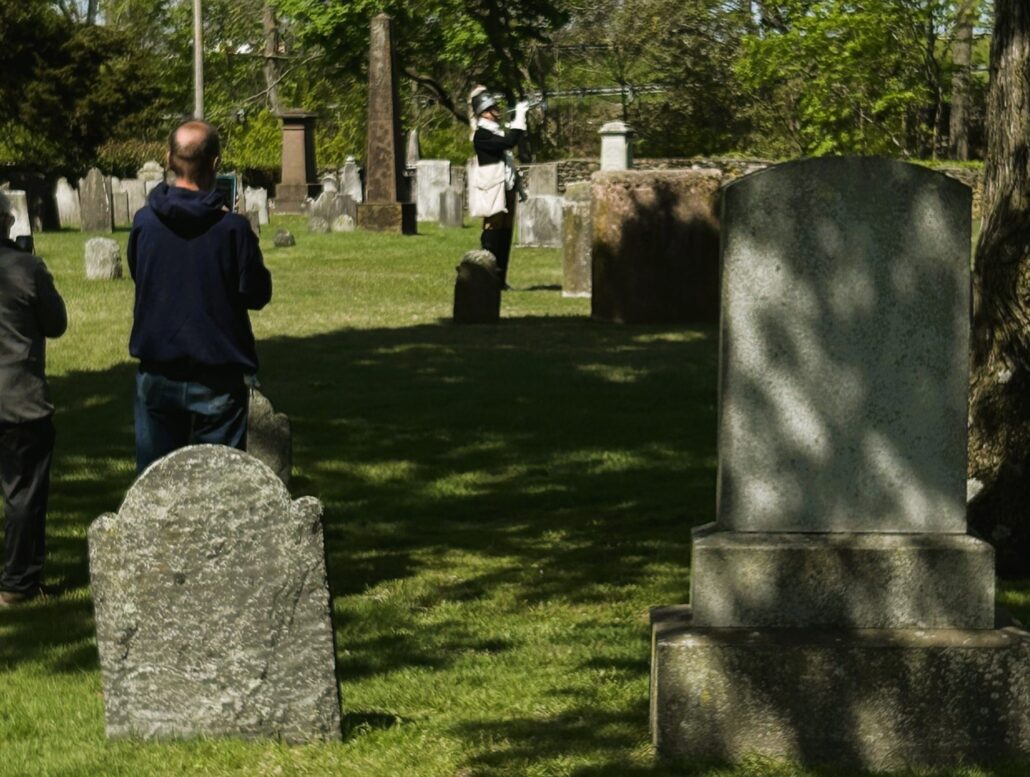
The Grave Marking Ceremony concluded with the traditional taps, and a Musket Volley Salute.

